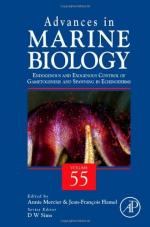|
This section contains 769 words (approx. 3 pages at 300 words per page) |

|
Gametogenesis is the production of haploid sex cells (in humans, ovum and spermatozoa) that each carry one-half the genetic compliment of the parents from the germ cell line of each parent.
The production of ovum is termed oogenesis and the production of spermatozoa is called spermatogenesis. Both oogenesis and spermatogenesis provide a mechanism through which genetic information may be passed to offspring. The fusion of spermatozoa and ova during fertilization results in a zygote with a fully restored diploid genome.
The production of male and female gametes a highly complex and coordinated sequence of a mitotic division, two meiotic divisions, cytoplasmic apportionment (divisions) and cellular differentiation. Any chronic alteration in the sequence of morphological and biochemical transformations required to produce gametes usually results in sterility for the affected parent.
Spermatogenesis provides the haploid gametes necessary to pass on paternal genetic information. Oogenesis provides the haploid gamete necessary to...
|
This section contains 769 words (approx. 3 pages at 300 words per page) |

|


